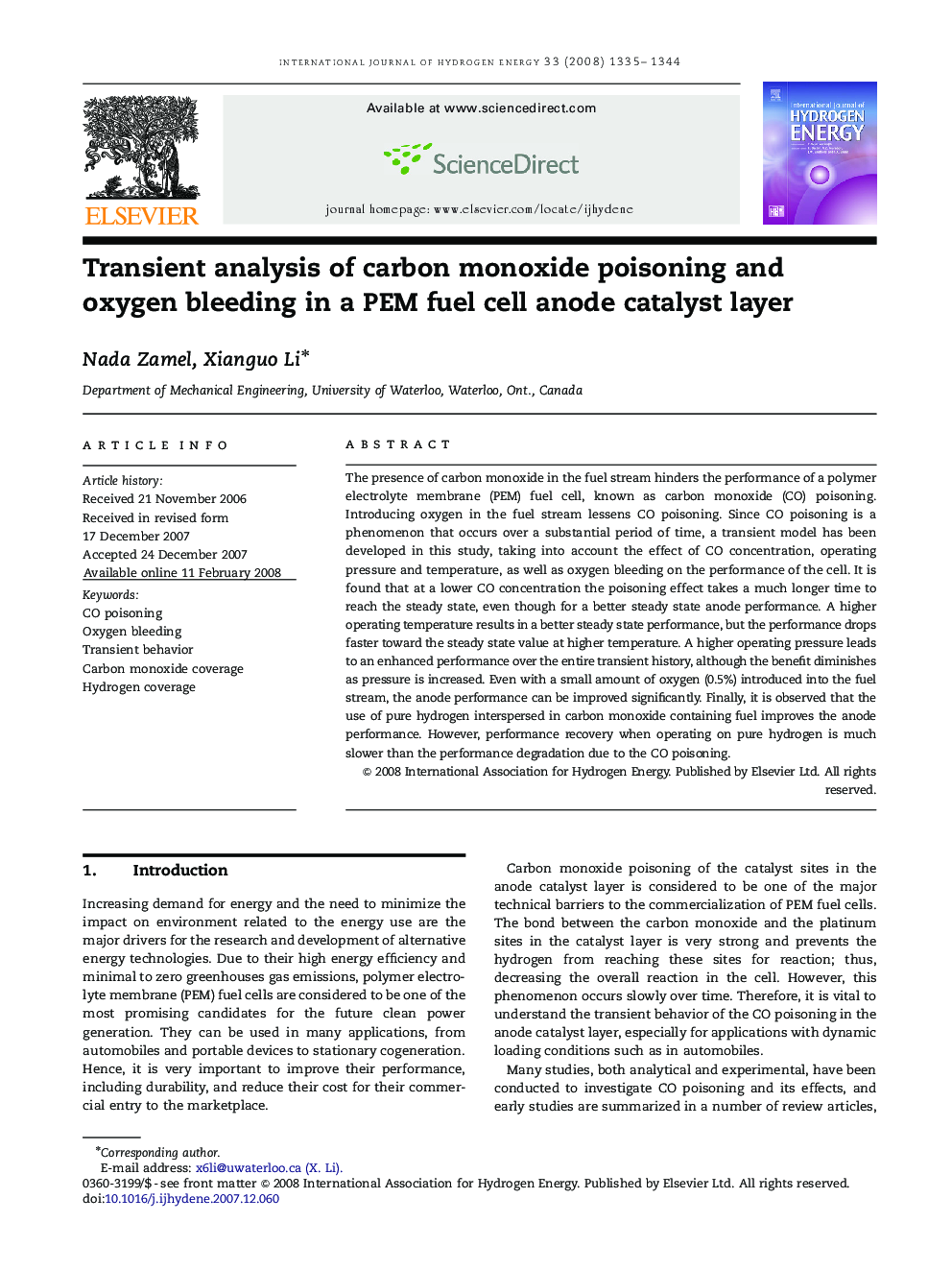| Article ID | Journal | Published Year | Pages | File Type |
|---|---|---|---|---|
| 1274710 | International Journal of Hydrogen Energy | 2008 | 10 Pages |
The presence of carbon monoxide in the fuel stream hinders the performance of a polymer electrolyte membrane (PEM) fuel cell, known as carbon monoxide (CO) poisoning. Introducing oxygen in the fuel stream lessens CO poisoning. Since CO poisoning is a phenomenon that occurs over a substantial period of time, a transient model has been developed in this study, taking into account the effect of CO concentration, operating pressure and temperature, as well as oxygen bleeding on the performance of the cell. It is found that at a lower CO concentration the poisoning effect takes a much longer time to reach the steady state, even though for a better steady state anode performance. A higher operating temperature results in a better steady state performance, but the performance drops faster toward the steady state value at higher temperature. A higher operating pressure leads to an enhanced performance over the entire transient history, although the benefit diminishes as pressure is increased. Even with a small amount of oxygen (0.5%) introduced into the fuel stream, the anode performance can be improved significantly. Finally, it is observed that the use of pure hydrogen interspersed in carbon monoxide containing fuel improves the anode performance. However, performance recovery when operating on pure hydrogen is much slower than the performance degradation due to the CO poisoning.
